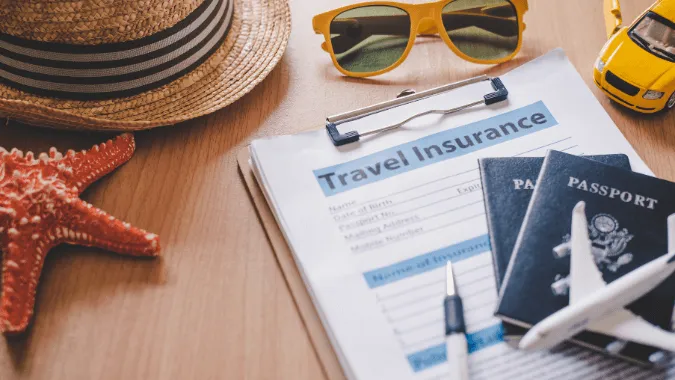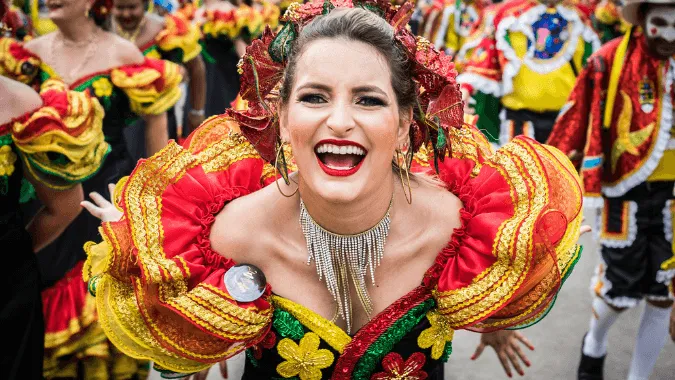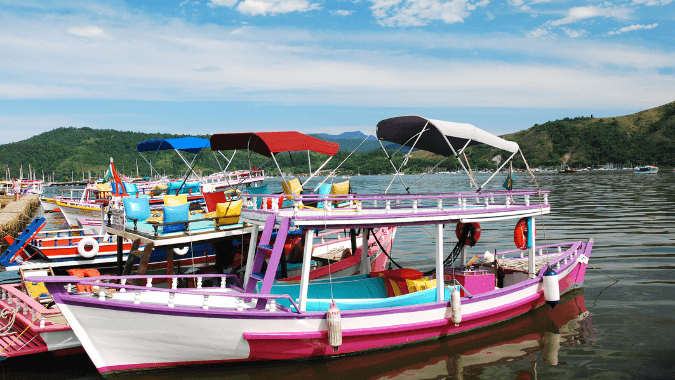Salta Travel Guide
Find all the useful travel information you need for your trip to the city of Salta, and it's surrounding areas with this Salta travel guide. Top tips, weather and transport information and the best activities and things to do in Salta and its surroundings.
![Salta Travel Guide]() Colonial documents speak of this place as a place consecrated to the sun / Photo: Canva Pro
Colonial documents speak of this place as a place consecrated to the sun / Photo: Canva Pro
SALTA GENERAL INFO
This region in the North of Argentina is famously known as 'Salta la Linda' (Salta the Beautiful) and once you have visited this magical place you will quickly understand why. The province of Salta is situated in the northwest of Argentina on the frontier with Chile, Bolivia and Paraguay at an average altitude of 1,200m. Salta is located in the southernmost region of the foregone Inca Empire, whose boundaries are now home to diverse, awe-inspiring natural landscapes such as the Lerma Valley, El Rey National Park in the Yungas Jungle, Baritu National Park and Los Cardones National Park, as well as the important Salta wine region Calchaqui Valley located near the town Cafayate.
The capital city of Argentina’s province of Salta is also called Salta, a name originating from the word ‘staga’ meaning ‘very beautiful’ in the ancient Indian language, Aymara. It was, interestingly, once known as Lerma, after the Spanish General Hernando de Lerma who conquered and colonized the area during the 16th century. However, many historians believe that Lerma was a disgraceful tyrant, possibly explaining why the name was changed back to Salta after the end of the Spanish rule.
SALTA CITY HIGHLIGHTS
Salta is Argentina's eighth largest city with a population of 516,000 inhabitants. The local population and culture is a blend of Spanish and gaucho traditions (mestizo, criollo, both indigenous and non-indigenous) creating an identity different from the rest of Argentina. The city is characterized by its beautiful, old colonial architecture as well as the stunning surrounding natural scenery, understandably making it one of Argentina’s most popular tourist destinations - for foreigners and Argentines alike.
Exploring Salta by wandering along the narrow pavements of the city centre on a Salta city tour is a great way to learn about the area’s rich history – from its indigenous roots to its Spanish colonisation and the remaining architectural treasures of this time. The museums of Salta exhibit a wide range of artefacts and art work from the native civilizations, the colonial and post-colonial periods. The Museo de Arqueologia de Alta Montana holds a fascinating exhibition of three perfectly preserved, frozen Inca mummies found at 6,700 meters on the Llullaillaco volcano.
Salta tourist attractions include a trip on the cable cars from Parque San Martin to the summit of Cerro San Bernardo where you can admire the stunning panoramic views of the city. Another Salta highlight is the Tren a las Nubes, or the Train to the Clouds, which goes from Salta station, the lowest point of the trip, before ascending dramatically and passing through the surrounding, indescribably beautiful landscapes.
But there are more surprises for tourists visiting Salta. At night, Salta city becomes a twinkling, beautiful dreamland, as hundreds of lamps and lanterns light up the most important buildings and streets daring even the most hardened of hearts not to fall in love with the city. The romantic atmosphere is perfect to share a typical Salteño dinner of hearty meat stew called Locro or other typical Andean specialties such as Tamales, creamy Humitas or spicy Empanadas accompanied with a perfectly chilled glass of the famous regional white wine, Torrontés to make of it the perfect Salta experience.
SALTA SURROUNDINGS
There are a huge amount of attractions to choose from in and around Salta and neighbouring Jujuy. Salta city is a perfect central point for visiting the entire provincial area as well as the north-westerly neighbouring Argentinean province of Jujuy with its strong Andean culture, deserts and high altitude towns similar to those found in Salta.
Travelling North of Salta along Route 51 and 40 towards the province of Jujuy offers great Salta sightseeing opportunities with the distinctive views of colourful jagged mountain profiles of Cerro de los Siete Colores and the Andean Humahuaca with its authentic crafts market and pre-Hispanic architecture. Salta’s other top attractions and surroundings include the pre-Inca fortification at Pucara de Tilcara; the dusty high deserts of the Puna (situated at the highest point of 3800m above sea level); extraordinary gorges and the vast plains of the brilliant white Argentinean Salt Flats, known as Salinas Grandes.
Back in the Province of Salta, National roads No. 33 and 40 will lead you through the dense jungle of the Lerma Valley, the sculpted rocky walls of the Calchaqui Valley and the pre-historic National Park of Los Cardones, with its impressive mountains and ravines. The land is beautifully shaped and dotted with quaint artisan villages such as the small traditional city of Cachi and the laid back paradise of Cayafate where you can try the best of the Salta’s wine, Torrontes.
Cafayate and the Calchaqui Valley are famous for having the highest elevated vineyards in the world, ranging between 2300m and 3100m above sea level. The altitude combined with the sunny, dry Salta climate creates the ideal conditions to grow the Torrontés grape. This particular Argentinean wine is crisp with high acidity and a wonderfully aromatic nose and fresh fruity flavours that cannot be replicated in any other part of the wine world.
For those adventurers looking for excitement and thrills in Argentina, get your heart racing by paragliding, skydiving, mountain climbing or river rafting along with many other fantastic adventure tours; whilst enjoying picture perfect views! The more faint hearted can take it easy by enjoying Salta's infinitely peaceful expanses whilst trekking, horse riding or fishing. This stunning scenery truly offers something for everyone and it's no wonder so many fall in love with Salta!
Salta surprises you with its diverse landscapes, excellent wine and the plentiful selection of superb travel activities to choose from. If you are either a backpacker wanting authenticity or a traveller looking for comfort, Salta has the necessary infrastructure to provide a safe and comfortable vacation while at the same time offering superb natural surroundings with ample things to see and do.
![Salta Travel Guide]() The Tren de las Nubes, which connects the Puna with the city of Salta, crosses 29 bridges and 21 tunnels / Photo: Canva Pro
The Tren de las Nubes, which connects the Puna with the city of Salta, crosses 29 bridges and 21 tunnels / Photo: Canva Pro
HOW TO GET TO SALTA
By Bus
There are connections to all major cities in Argentina. From Retiro station in Buenos Aires the bus will take approximately 19 hours in comfortable coaches that range from standard to sleepers. Meals and drinks are served on board, all have toilets and films are also shown during the trip. Several bus companies cover this route daily: Andesmar, La Veloz del Norte and Flechabus. You can check all departure times and prices on the Omnilineas website.
By Plane
Salta is located 1251km north of Buenos Aires. The non-stop flight time is approximately 2.5 hours. Two airlines fly this route daily: Aerolineas Argentinas and LAN Argentina.
To get from the airport to your hotel in Salta, book an airport transfer from Salta’s International Airport, Martín Miguel de Güemes (SLA).
WEATHER IN SALTA
The climate in the Salta province is influenced by both tropical and temperate weather. There are four main climates in the area: the climate of the Impenetrable to the east (the Yungas Jungle), the climate of low valleys (Valles Calchaquies, Valle de Lerma), the climate of the Altiplano, and the climate of the highest peaks.
Impenetrable Climate
Winter: From July to August, the weather is dry and pleasant but short-lived, with high temperatures usually between 18°C and 25°C and lows between 7°C and 14°C.
Summer: From November through to April, there is very high humidity extreme heat and the severe thunderstorms. Around 80% of the yearly precipitation falls in this season, and average maximum temperatures reach 37°C with lows of 23°C. During heat waves, temperatures over 45°C can be reached
The Low Valleys Climate
Winter: Relatively mild during the day with very low precipitation and with average temperatures of 19°C, occasionally reaching over 25°C but sometimes staying below 5°C Evening temperatures range from 3°C to below -5°C (23F)
Summer: This season is usually rainy and very moderate, with highs of 28°C and lows of 15°C. Thunderstorms are very common along with intense solar radiation.
The Altiplano Climate
Winter: The climate is arid and cold but sunny with, temperatures varying between 14°C and -15°C
Summer: Warm but cloudy with excessive rainfall of over 400mm in total. Temperatures range from 21°C to 6°CThe High Peaks Climate (over 6,000 meters above sea level):The High Peaks are constantly covered by snow and temperatures rarely reaching the 0°C mark. The climate is characterised by constant high winds, extreme aridity and high solar radiation.
![Salta Travel Guide]() Religious ceremonies, warriors and animals such as suris, jaguars, birds, insects and llamas are represented on the panels / Photo: Canva Pro
Religious ceremonies, warriors and animals such as suris, jaguars, birds, insects and llamas are represented on the panels / Photo: Canva Pro
USEFUL TIPS SALTA
Like many provincial cities and towns, most shops close in Salta between 1 and 5pm for siesta, before reopening until around 9pm.
Beware of soroche, or altitude sickness in the higher altitude parts of Salta Province, particularly on the Train to the Clouds. Remember to drink plenty of fluids and to take your time while you acclimatise.
The city of Salta is easy to get around, and there are plenty of cheap taxis available in town. If you want to hire a car to explore the surrounding areas, there are a number of car rental agencies. Be aware that many roads in the province are unpaved and dangerous in bad weather.
Discover Salta for yourself with one of our varied and exciting Salta tours and excursions!
By: Team Content Daytours4u.
-
Exciting 4x4 route: São Luís and FortalezafromUS$1,014
-
Vila Gale Mares Resort All InclusivefromUS$100
-
Ecotourism in Chapada DiamantinafromUS$672
-
All inclusive Vila Gelé Cumbuco ResortfromUS$999
-
Full Day Cafayate Tour from SaltafromUS$68
-
Transfer Aeroparque - Buenos AiresfromUS$46
-
-
Transfer Ezeiza - AeroparquefromUS$91
-
-
Excursion to El Chaltén from El CalafatefromUS$153
-
-
-
-
-
-
-
-
-
-
-

 Colonial documents speak of this place as a place consecrated to the sun
Colonial documents speak of this place as a place consecrated to the sun  The Tren de las Nubes, which connects the Puna with the city of Salta, crosses 29 bridges and 21 tunnels
The Tren de las Nubes, which connects the Puna with the city of Salta, crosses 29 bridges and 21 tunnels  Religious ceremonies, warriors and animals such as suris, jaguars, birds, insects and llamas are represented on the panels
Religious ceremonies, warriors and animals such as suris, jaguars, birds, insects and llamas are represented on the panels 

